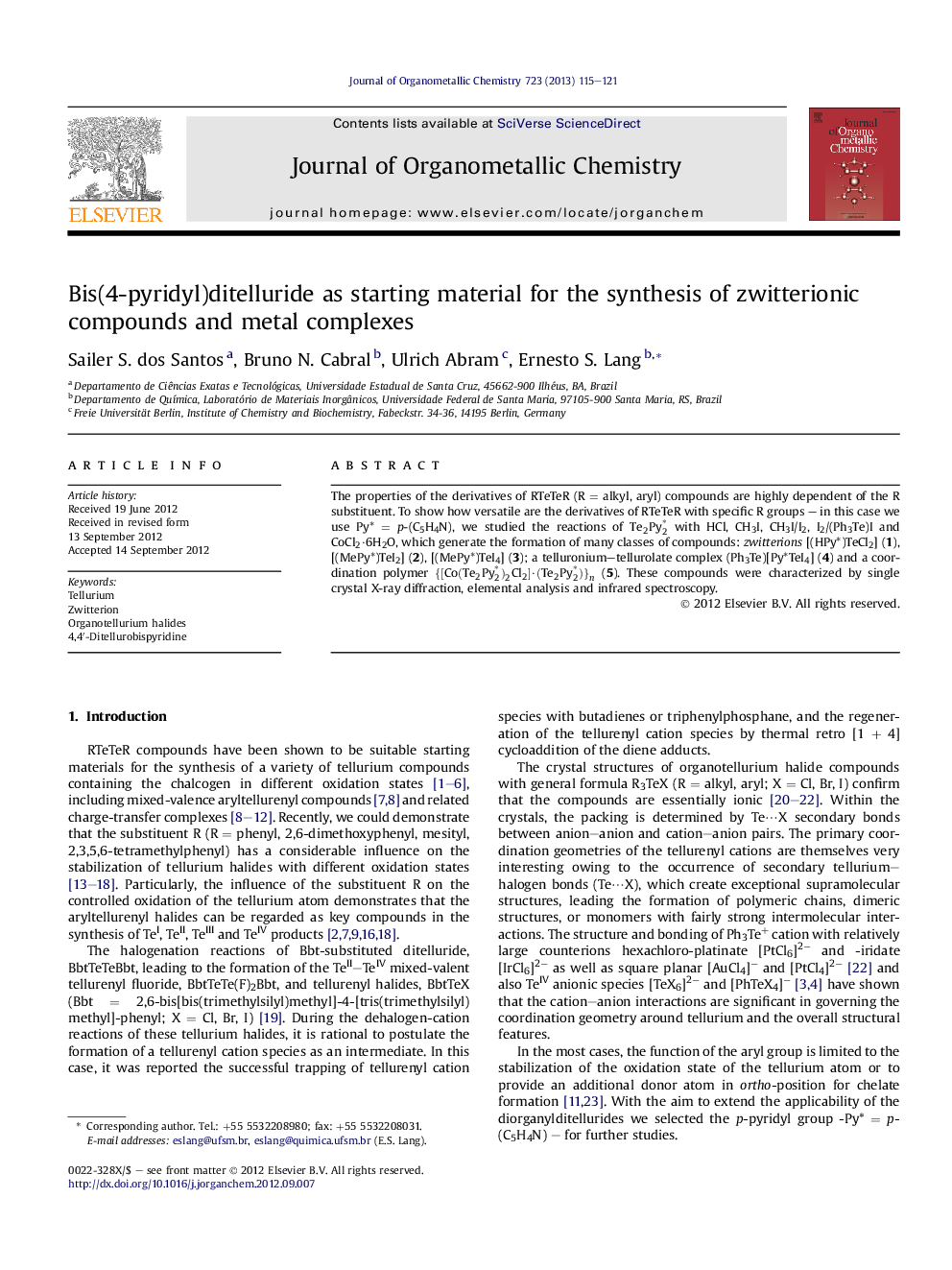| Article ID | Journal | Published Year | Pages | File Type |
|---|---|---|---|---|
| 1322959 | Journal of Organometallic Chemistry | 2013 | 7 Pages |
The properties of the derivatives of RTeTeR (R = alkyl, aryl) compounds are highly dependent of the R substituent. To show how versatile are the derivatives of RTeTeR with specific R groups – in this case we use Py* = p-(C5H4N), we studied the reactions of Te2Py2∗ with HCl, CH3I, CH3I/I2, I2/(Ph3Te)I and CoCl2·6H2O, which generate the formation of many classes of compounds: zwitterions [(HPy*)TeCl2] (1), [(MePy*)TeI2] (2), [(MePy*)TeI4] (3); a telluronium–tellurolate complex (Ph3Te)[Py*TeI4] (4) and a coordination polymer {[Co(Te2Py2∗)2Cl2]·(Te2Py2∗)}n (5). These compounds were characterized by single crystal X-ray diffraction, elemental analysis and infrared spectroscopy.
Graphical abstractReactions of bis(4-pyridyl)ditellurides with HCl, CH3I, CH3I/I2, I2/(Ph3Te)I and CoCl2·6H2O give products of the compositions [(HPy*)TeCl2], [(MePy*)TeI2], [(MePy*)TeI4], the telluronium–tellurolate complex (Ph3Te)[Py*TeI4] or the coordination polymer {[Co(Te2Py2∗)2Cl2]·(Te2Py2∗)}n.Figure optionsDownload full-size imageDownload as PowerPoint slideHighlights► Bis(4-pyridyl)ditellurides are versatile synthons. ► TeII zwitterions are obtained from reactions with MeI. ► TeIV zwitterions are obtained from oxidation of such products with I2. ► Reactions with CoII give a coordination polymer.
